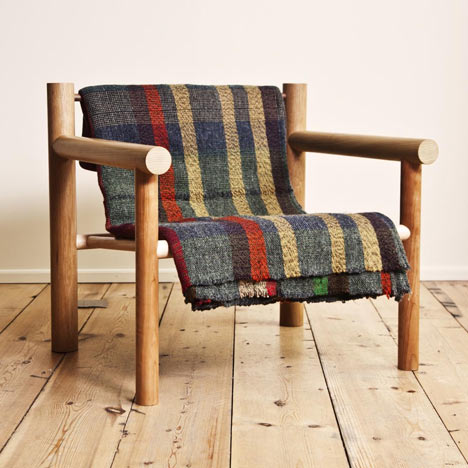
Woodware by Max Lamb at Gallery Fumi
London Design Festival 2011: designer Max Lamb has created a series of furniture made entirely from standard wooden dowels.
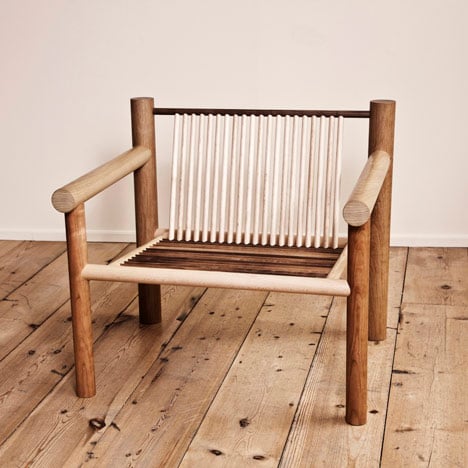
The collection comprises a lounge chair, dining chair, daybed, bed, coffee table and console made from a selection of hardwoods including ash, maple, beech, birch and oak.
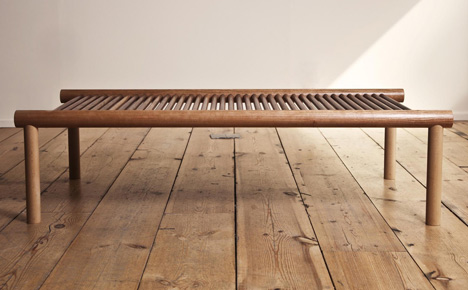
Lamb's intention was to design a range of furniture so simple that any artisan would be able to recreate it should he wish to expand production.
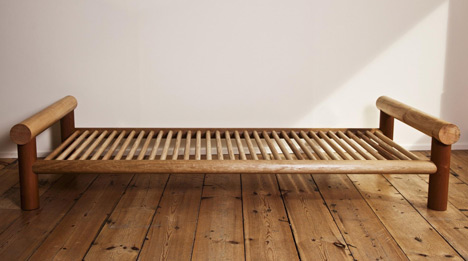
The pieces reference traditional English furniture in their simple construction.
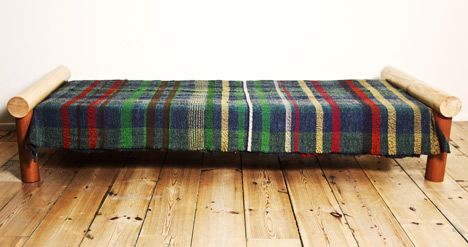
Woodware is part of a presentation entitled Studio Ware at Gallery Fumi.
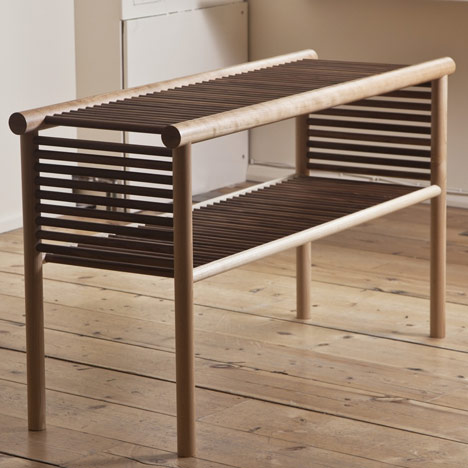
The show also features work by Studio Glithero and Johannes Nagel and is part of the Shoreditch Design Triangle.
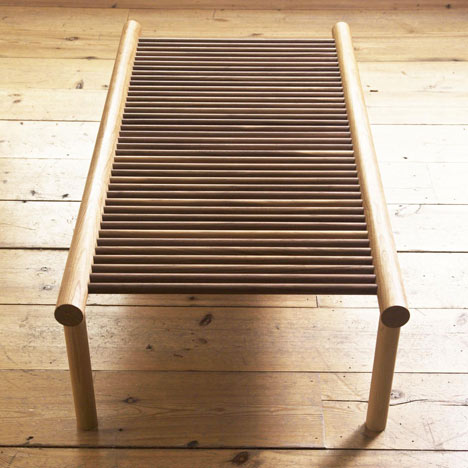
See all of our stories on Max Lamb here and all our stories about this year's London Design Festival here.
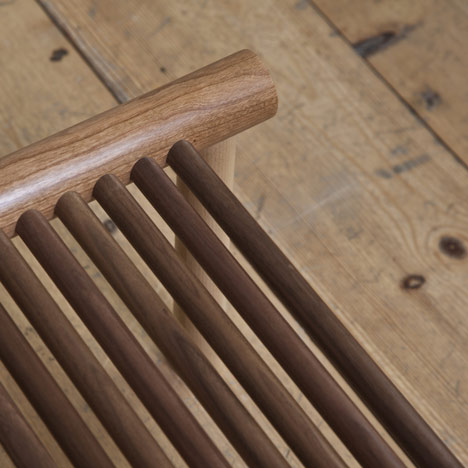
Here is some more information from Gallery Fumi, written by Caroline Roux:
Woodware
Called Woodware, Max Lamb’s new collection comprises a series of apparently utilitarian furniture made entirely out of standard dowels in a variety of hard woods including ash, maple, beech, cherry and oak.
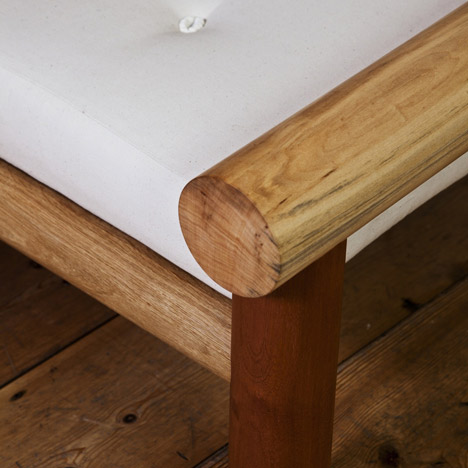
“I wanted to get a feel for all the woods used in traditional English timber chairs,” says Max.
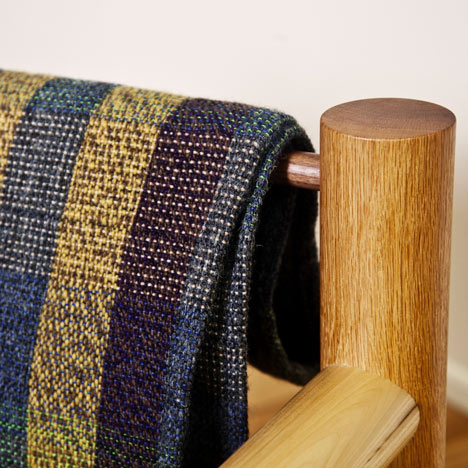
The collection includes a lounge chair, dining chair, daybed, coffee table and console, all made by Lamb in his Tottenham studio, but such is the simplicity and clarity of their design could also be recreated by other artisans should he wish to expand production.
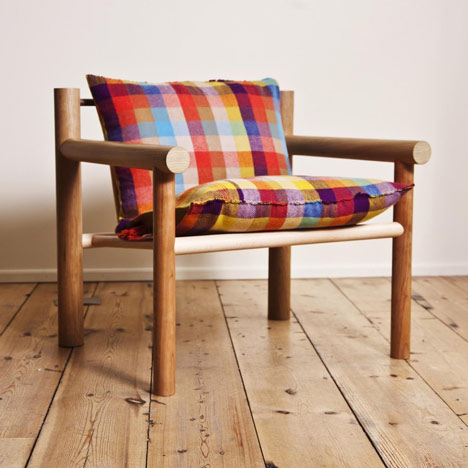
“I set out to create a formula for constructing the furniture using dowels of varying diameters and exploring the way they interconnect. All holes are drilled with a forstner cutter perpendicular to the dowel but being round offer natural pivots for the angled seat and back-rest.”
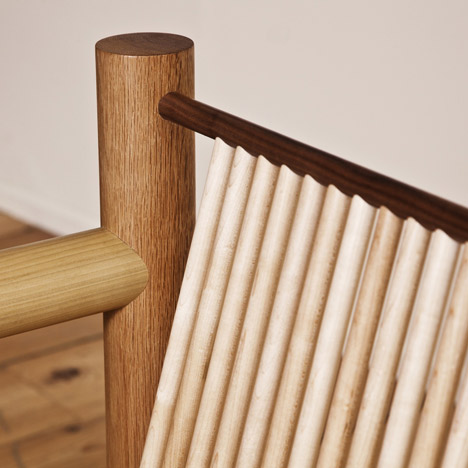
Although the lounge chair can be used without any form of upholstery, cushioning and warmth can be provided by simply draping a blanket, sheepskin or even pillows, for example, over the dowel frame, offering unlimited fabric options and flexibility without the need for conventional upholstered cushions or a seat-pad.
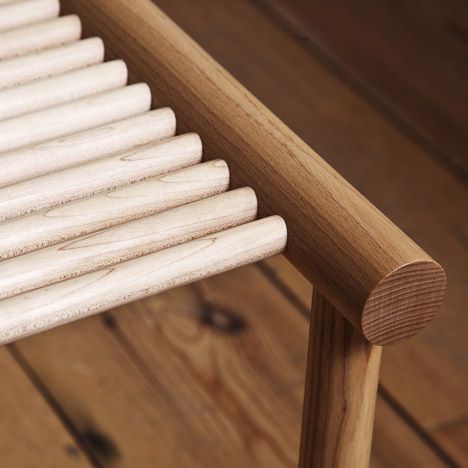
The lounge chair and day-bed are presented with blankets hand-woven by Travis Meinolf.
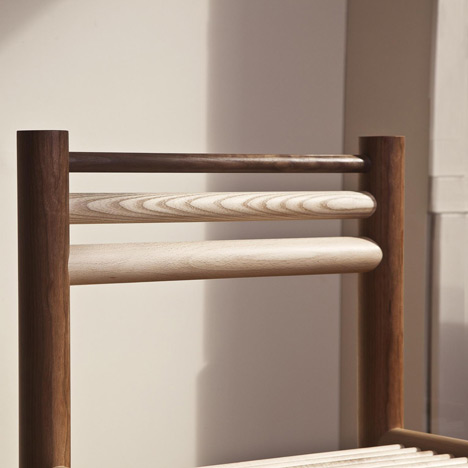
The pieces make a nod to the long-standing tradition of British furniture, such as ladder- and spindle-back chairs and simple shelving of rod-construction, that has served in the country’s houses for centuries, while making a nod to contemporary preoccupations of lightness, both physically and aesthetically.
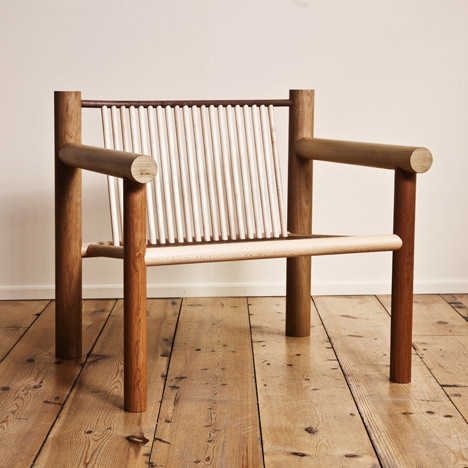
“The use of different wood types references the way the ends of industrial dowels are painted different colours for easy identification,” says Max. “Each size of dowel in Woodware is cut from a different wood - eight in total, from 16mm maple to 110mm lime.”
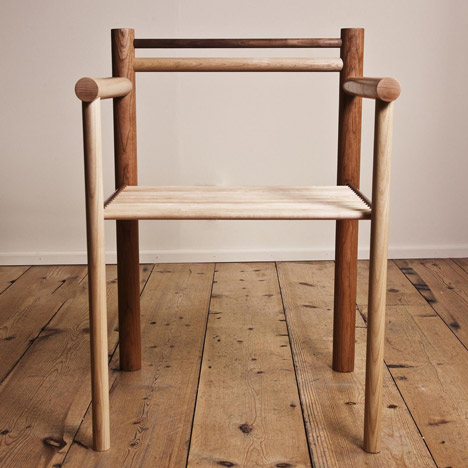
The resulting pieces are physically and visually light, their density, both real and visual, dramatically reduced by the small amount of material necessary for their construction.
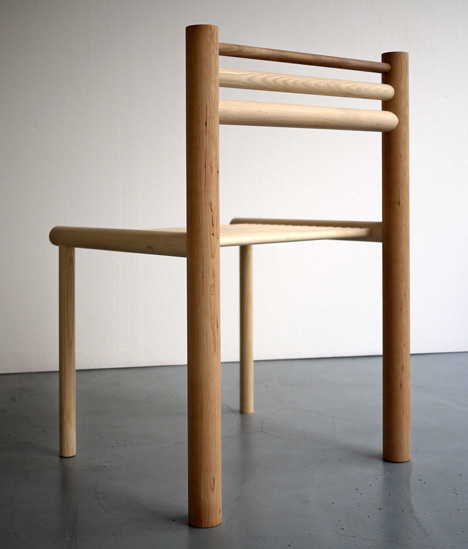
Max is considering producing this series as an edition limited not by numbers, but by the time-honoured skills inherent to working with wood by hand.
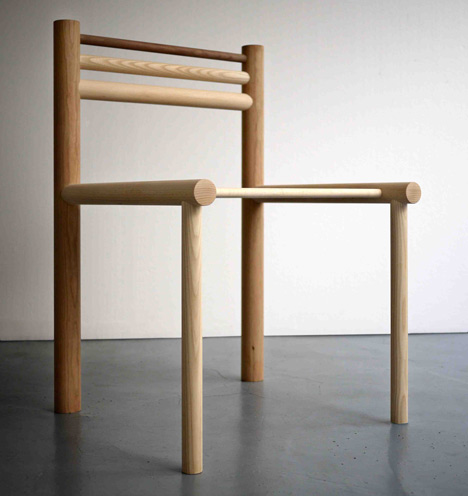
“To make these pieces in an edition of, say, 8 would seem unsuitably precious,” he says. “Adopting Bernard Leach’s approach to making ‘Standard Ware’ my Woodware collection is intended to be affordable and function well within the home, whilst offering the warmth of hand-crafted furniture made by me within my London studio.”
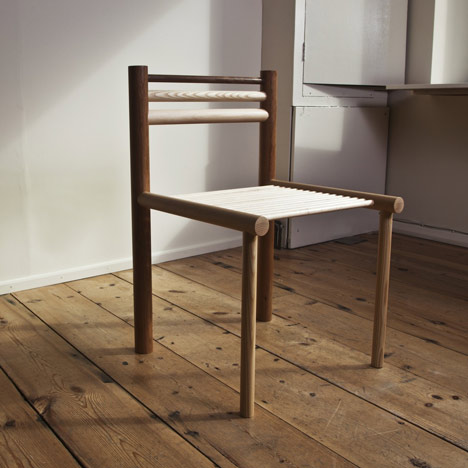
Limited, then, but in a different way.
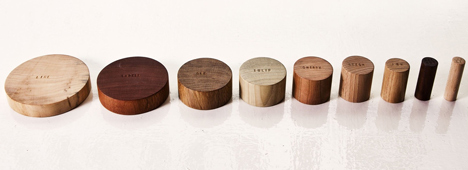
The diameters and woods used are:
16mm = Maple
20mm = Walnut
30mm = Ash
40mm = Beech
50mm = Cherry
60mm = Tulip
70mm = Oak
90mm = Sapele
110mm = Lime
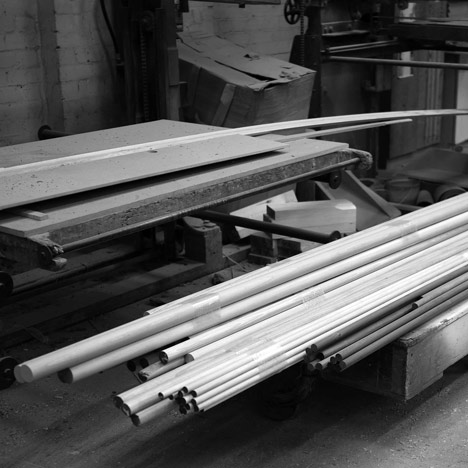
Studioware
Early in 2011, the directors of Gallery FUMI, Valerio Capo and Sam Pratt, were discussing the possibility of putting on a show with the London designer Max Lamb.
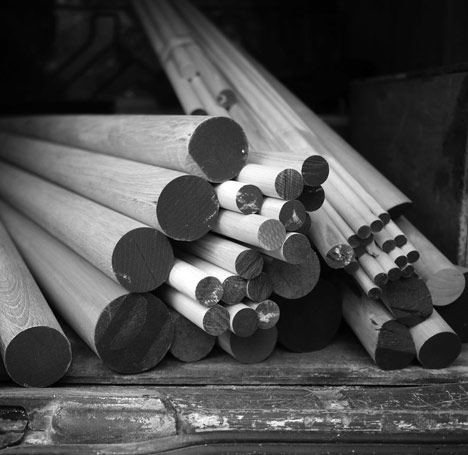
Lamb, a recent convert to the joys of ceramic, was particularly taken up at the time with the role of the workplace in a maker’s life.
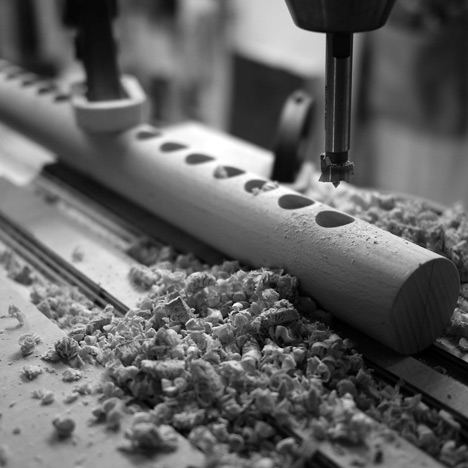
His native Cornwall, he explained, had been littered with pottery studios in the mid-twentieth century (and to an extent still is), and one of the best practitioners, Bernard Leach, had used his own studio to create a range of beautiful but utilitarian pieces that he called Standard Ware.
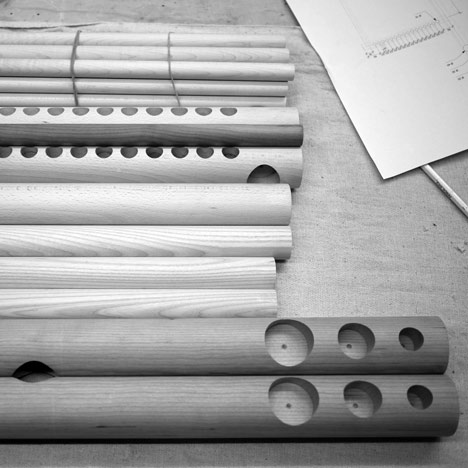
Soon, due to Leach’s ability to turn out this work in decent quantities, it appeared in homes all over Britain. And if not the real thing, something very like it did.
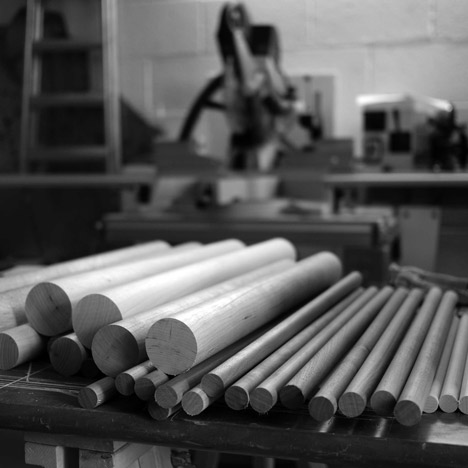
What Max Lamb was really thinking about was how designers and artists can fulfill the potential of their own studios, making it into a space of personal expression and self-production – in either quantity or quality or both.
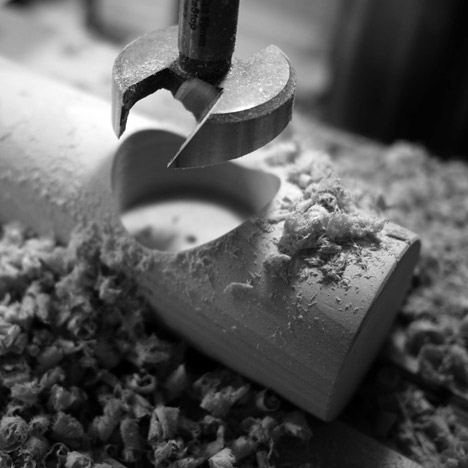
Taking Leach’s own coinage of Standard Ware, Lamb suggested that an exhibition, under the heading Studioware, would be a very fine exhibition indeed.
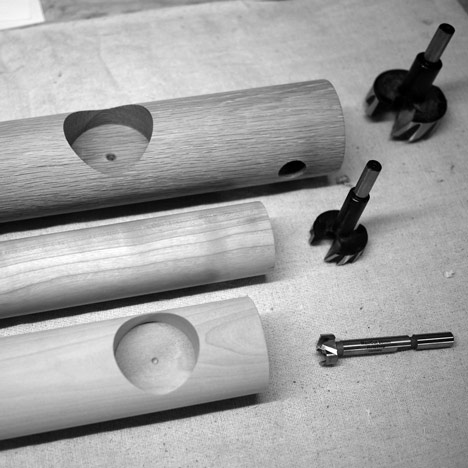
Gallery FUMI went on to invite two other studios to join the event. In north London, they spoke to Glithero, who have completed several collaborations with the gallery.
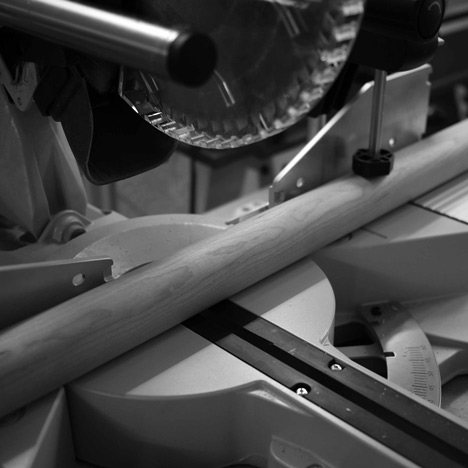
Tim Simpson and Sarah van Gameren, who make up Glithero, transform their studio with every project, turning it from a plaster workshop to a papier maché production line, depending on their needs.
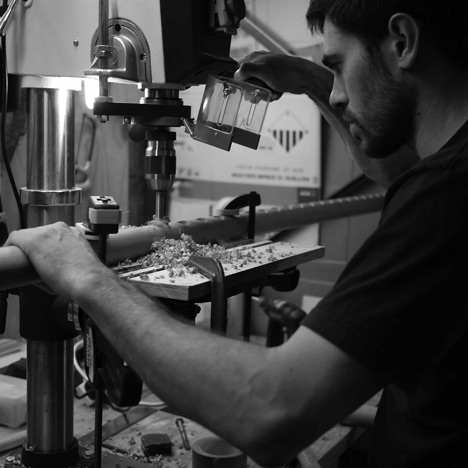
In Germany, they approached Johannes Nagel, another artist familiar to them, who from a workspace in an apartment building in Halle, creates extraordinary groupings of highly individualistic ceramic pieces. His studio literally frames his practice, which at one point happens to coincide with that of Max Lamb: both use sand moulds to make pieces.
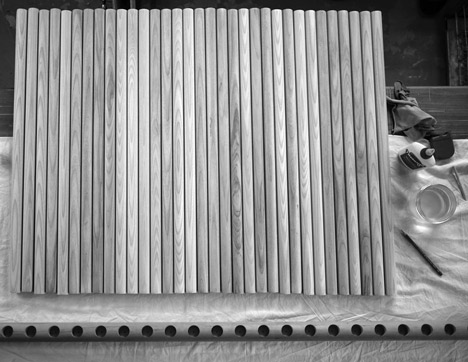
Glithero and Lamb, on the other hand, share an unusual ability to take the exploration of individual materials and processes to their absolute limit in the pursuit of exciting design.
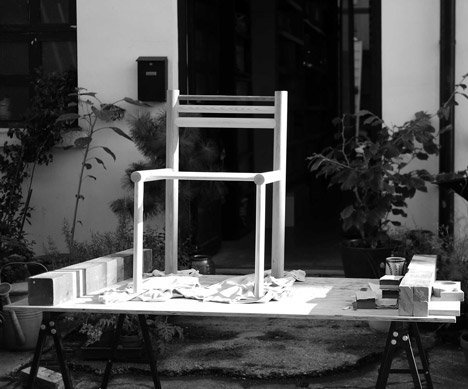
Once the show was agreed, the designers retired to their respective spaces to fine-tune ideas they had previously considered but never brought to life. Setting the interior of the studio as the limit within which they could work, they have all achieved results that will now go on to have repercussions and respect far outside those four walls.